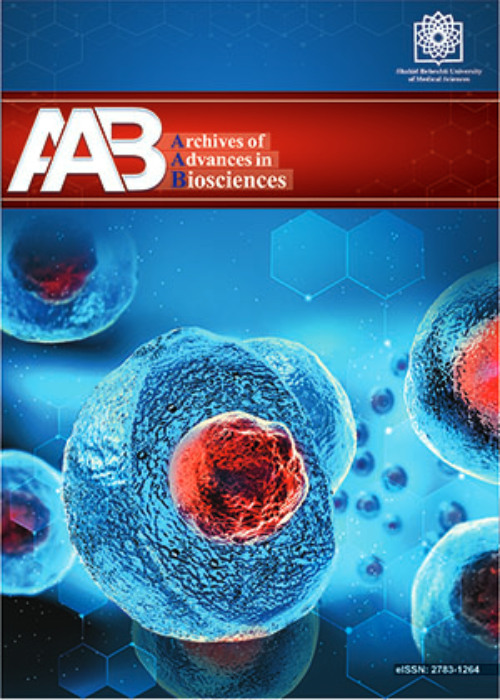Proteomic analysis of gene expression during human esophagus cancer
Author(s):
Abstract:
Esophagus cancer is the eighth most common cancer worldwide and particularly high in an area extending from the southern border of the Caspian Sea in Iran across central Asia to China. Since information about this mysterious disease is poor, proteomics may be solving this enigma. Altering gene expression in cancer cell is a remarkable indicator can be detected by proteomics techniques and bioinformatic analysis. In this study, normal and cancerous cells were obtain from patients, total proteins were purified by standard methods, and proteins separated by two dimensional electrophoresis (2DE). Some of proteins were identified by Mass spectrometry (MS-MALDI method). By using bioinformatic analysis illustrate molecular mechanism in this disease. Analysis of gels base on Flicker software and Mass Spectrometry led the same result. 61 protein spots detected in both gels that 21 spots have down regulated and 12 spots have up regulated in cancerous cell than normal. About 14 spots were disappeared in cancer cell while 14 new spots expressed. By using flicker detected 8 Protein that refer to TRFE, SZ07, C1 TC, Kininogen, anexin, keratin, fructosebisphosphate aldolase A and heat shock. Mass spectrometry (MS-MALDI method) identified anexin, keratin, fructosebisphosphate aldolase A and heat shock. Identified proteins were functionally categorized based on Gene Ontology (GO) annotation terms using the DAVID program package. The major molecular functions that annotated with PIR include phosphoprotein, disease mutation while annotated by GO include response to organic substance, response to wounding and cellular homeostasis. The cellular component and molecular function presenting the greatest enrichment that concluded two clusters that the two most importants are cellular homeostasis and extracellular region part. Results reveal that the most of molecular function in cancerous tissue maintenance cellular homeostasis, cell regeneration and repair, so tissues undergo stress try to survive. It can be also concluded that aldolase A, fructose-bisphosphate, keratin 14, formyltetrahydrofolate synthetase and transferrin can be some diagnostic biomarkers and also drug targets in esophagus cancer.
Language:
English
Published:
Archives of Advances in Biosciences, Volume:2 Issue: 3, Summer 2011
Page:
37
https://magiran.com/p916142
دانلود و مطالعه متن این مقاله با یکی از روشهای زیر امکان پذیر است:
اشتراک شخصی
با عضویت و پرداخت آنلاین حق اشتراک یکساله به مبلغ 1,390,000ريال میتوانید 70 عنوان مطلب دانلود کنید!
اشتراک سازمانی
به کتابخانه دانشگاه یا محل کار خود پیشنهاد کنید تا اشتراک سازمانی این پایگاه را برای دسترسی نامحدود همه کاربران به متن مطالب تهیه نمایند!
توجه!
- حق عضویت دریافتی صرف حمایت از نشریات عضو و نگهداری، تکمیل و توسعه مگیران میشود.
- پرداخت حق اشتراک و دانلود مقالات اجازه بازنشر آن در سایر رسانههای چاپی و دیجیتال را به کاربر نمیدهد.
In order to view content subscription is required
Personal subscription
Subscribe magiran.com for 70 € euros via PayPal and download 70 articles during a year.
Organization subscription
Please contact us to subscribe your university or library for unlimited access!


